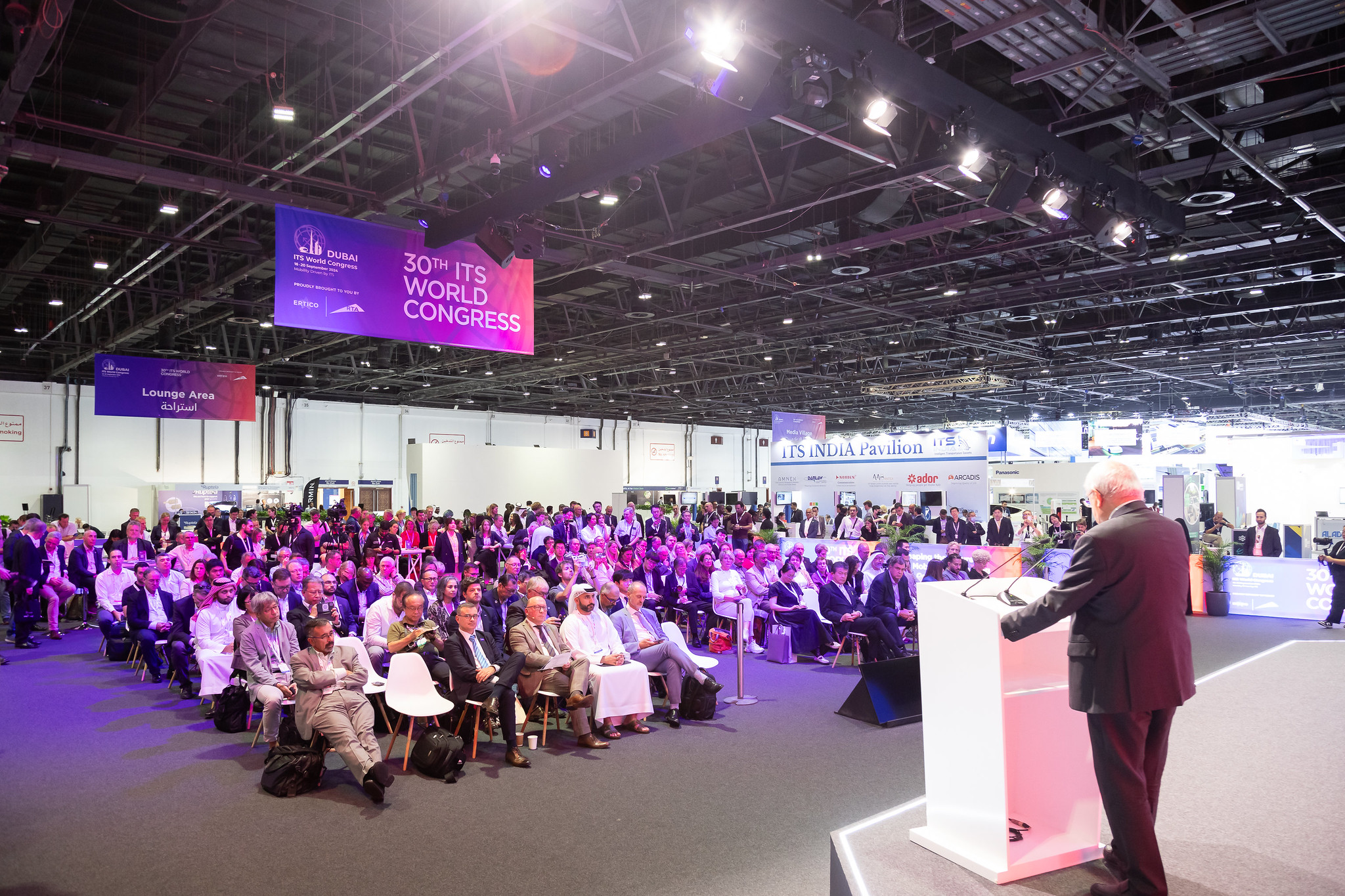The 30th ITS World Congress, held in Dubai, shone a spotlight on the advancements in Intelligent Transportation Systems (ITS) and smart mobility. Over the course of five intensive days, more than 200 hours of plenaries, forums, and sessions showcased the latest innovations and discussions shaping the future of mobility. In his closing remarks, Chief Rapporteur Mr. Wolfgang Hoefs summarised the event by highlighting key insights and outcomes from the event, commenting on the immense effort that went into presenting groundbreaking ideas across numerous sectors.
Automated Mobility: A Global Yet Regional Approach
One of the most prominent themes of Congress was Automated Mobility. With over 50 papers and 30 sessions dedicated to this topic, it became clear that the future of automated transportation depends heavily on regulatory frameworks and international collaboration. Developers of automated driving systems and vehicle manufacturers are operating on a global scale, but their use cases reflect regional differences.
A high share of 40% of the papers on automated mobility came from the Asia-Pacific region. The focus was on shared, on-demand services like automated ride-pooling and public transport solutions, with a particular interest in both urban and rural applications. Remote management also emerged as an integral part of these automated services, with ongoing advancements in this area.
The pace of deployment for automated cars and trucks has been slower than expected, and as of now, no standard business model exists to ensure widespread adoption. However, it was widely acknowledged that safety, social acceptance, and the societal impact of automated driving are essential for its successful integration into daily life.
Clean Mobility: Energising Sustainable Futures
Clean Mobility was another major pillar, with 15 sessions dedicated to exploring the role of intelligent systems in reducing emissions and creating a sustainable future. The session, “Energising the Future: Innovations in Clean Mobility and Intelligent Systems”, stood out as a comprehensive look at how clean mobility solutions intersect with both automated and urban mobility systems.
As cities strive to cut greenhouse gas emissions, clean mobility has emerged as a critical area for development, with electric vehicles (EVs), alternative fuels, and intelligent transportation systems all playing key roles. The drive to improve air quality and combat climate change has propelled clean mobility from a niche topic into a mainstream conversation at events like the ITS World Congress.
Urban Mobility: AI and V2X Take Centre Stage
The number of submissions on Urban Mobility outpaced those on Automated Mobility, with 86 papers and 29 sessions dedicated to exploring new solutions. The discussions covered five key areas:
- The increasing use of artificial intelligence (AI) in traffic management, image recognition, and predictive technologies.
- The transition from analogue to Vehicle-to-Everything (V2X) technologies, which allow vehicles to communicate with each other and their surroundings.
- Ensuring equity, diversity, accessibility, and inclusion in ITS and mobility services.
- Enhancing safety through new tools and techniques.
- Emphasising data sharing to optimise the effectiveness of ITS tools.
AI took centre stage in many of these conversations, with discussions on advanced pedestrian detection systems and AI-enhanced overhead cameras. The integration of digital twins—virtual models that reflect real-world transportation systems—also gained significant attention this year, with much progress made since the last Congress.
Innovation in Mobility and Logistics: The Future of Transport
Innovation was at the forefront of the Congress, with 49 sessions focusing on new ideas in Mobility and Logistics. The increasing demand for future-proof solutions, both for passenger transport and the movement of goods, was evident throughout these discussions.
A notable highlight was the exploration of unmanned aircraft solutions (UAS) for cargo transport. This technology offers a roadmap for authorities and industries seeking to overcome challenges in logistics, especially for remote areas. Meanwhile, communication technologies such as 6G also generated interest, particularly for improving services in areas with weak data signals, be it in rural or densely populated urban regions.
Key Takeaways: Data-Driven, AI-Enhanced, and Future-Focused
In his closing remarks, Wolfgang Hoefs shares, “Reflecting on the insights gained from the Congress, it is clear that the future of mobility is data-driven, automated, and digitally integrated.” Data sharing is crucial for optimising transportation systems, and AI is rapidly proving itself as a key enabler for everything from traffic management to the detection of vulnerable road users.
However, the sheer volume of data being generated presents new challenges. There is a growing need for platforms capable of processing raw data and providing actionable insights.
The deployment of AI in ITS applications has shown promising results. Machine learning, when fed with high-quality data, offers innovative solutions to problems previously unsolvable with traditional computing methods.
Conclusion: A Collaborative, Innovative Path Forward
The 30th ITS World Congress in Dubai reaffirmed the importance of collaboration, innovation, and sustainability in shaping the future of transportation. From automated mobility and clean energy solutions to AI-enhanced logistics, the Congress highlighted how global efforts are driving progress across sectors.
As we look ahead, the insights and innovations shared at the Congress will serve as a guiding force for the development of safer, more efficient, and more sustainable transportation systems worldwide.
The final Congress Report will be available in the next few weeks.

